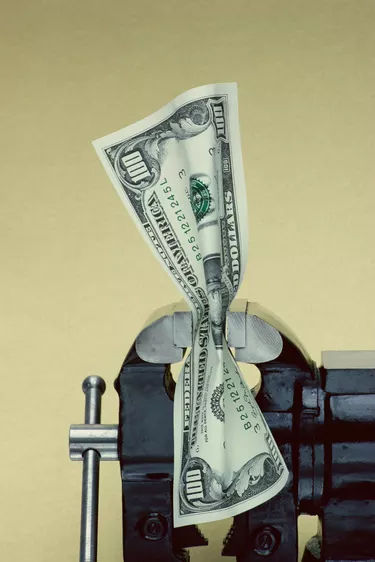
When small businesses export goods to foreign countries, import goods to sell in the United States or import materials to use in the production of other goods, currency exchange rates play a significant role in the cost of those goods and materials. Companies can make money when the currency they use to purchase goods rises relative to the currency of the exporting country. In economic theory, this concept is called purchasing power parity, in which inflation differentials play key roles.
PPP and Inflation Rates
Video of the Day
One economic principle that governs the theoretical behavior of exchange rates is purchasing power parity. When comparing economic behavior in one country to another, purchasing power parity, often referred to as PPP, states that the currency that has the higher inflation rate will depreciate relative to the currency with the lower inflation rate. When a currency's exchange rate behaves exactly as described here, economists state that the currency's real effective exchange rate -- in shorter terms, its real exchange rate -- was constant. The inflation rate differential is the difference between the inflation rate in one country and the inflation rate in another.
Video of the Day
Illustration
If a foreign country has an inflation rate of eight percent, and the United States has an inflation rate of five percent, the inflation differential equals three percent. Macroeconomic theory states that if governments do not interfere to adjust their inflation or currency conversion rates, the nominal rates will vary only by the inflation differential. If exchange rates adjust to inflation differential, PPP states that real exchange rates stay the same.
Impact
If the inflation rate is lower in the United States, there will be a greater price increase on goods originating from the foreign country than on domestically produced goods. As the inflation rate differential increases in favor of the foreign country, that country's goods become more and more expensive. Although economic theory outlines the relationship between inflation and currency exchange rates, actual evidence indicates that this relationship does not hold up in the short term. It works better when the business observer takes a long-term view, especially with regards to forecasting long-run exchange rate movements.
Importance
Purchasing power parity stresses the important role that inflation and inflation differentials play in currencies and exchange rates. PPP's importance as a predictor increases as the inflation differential grows wider. In addition, PPP does have value as a long-range exchange rate direction indicator.